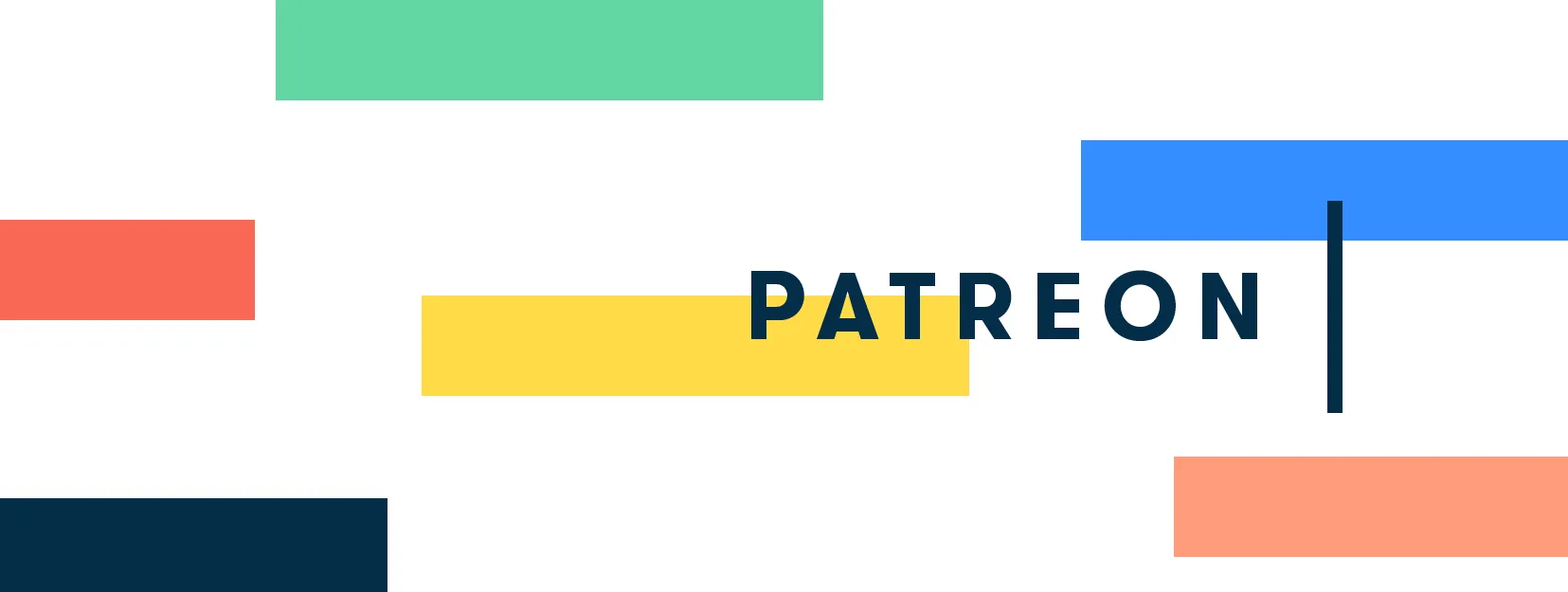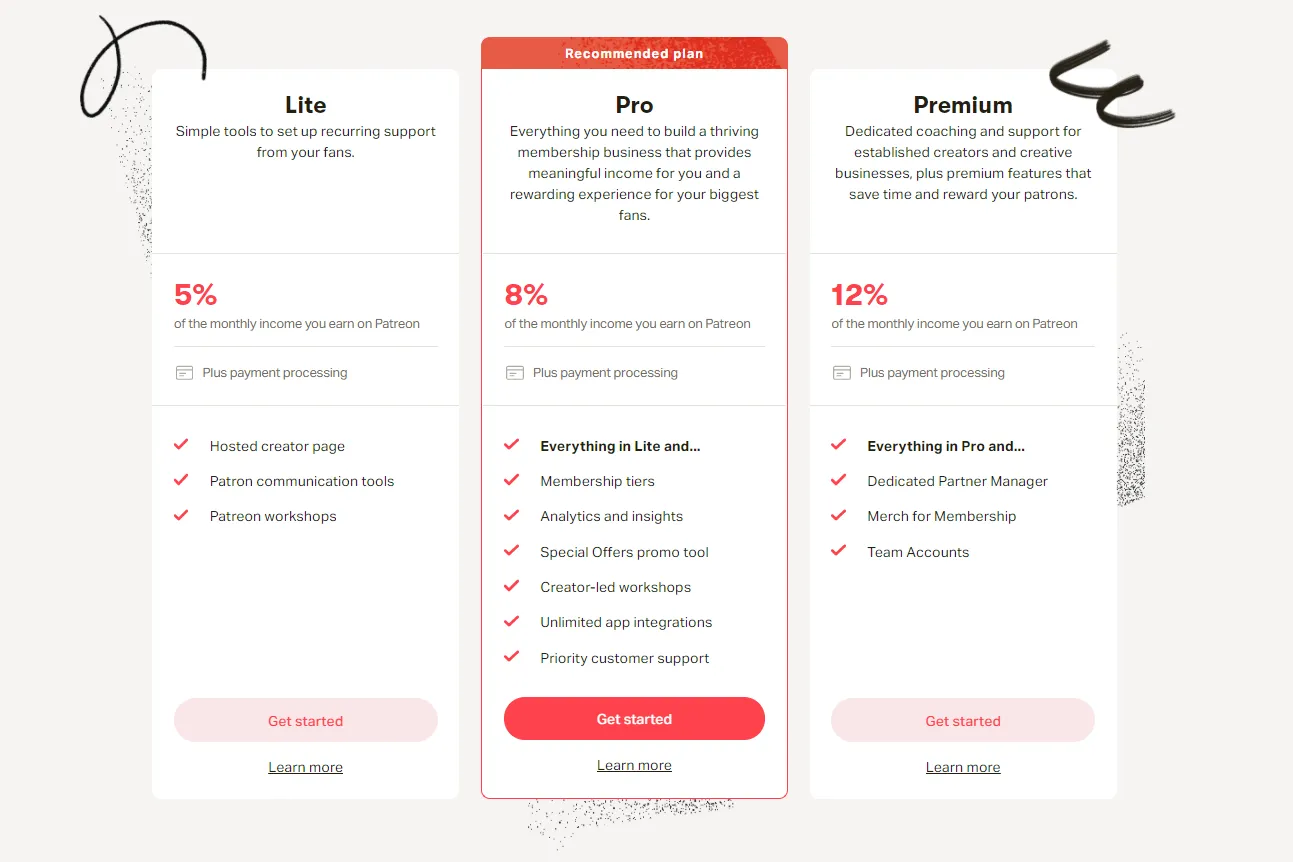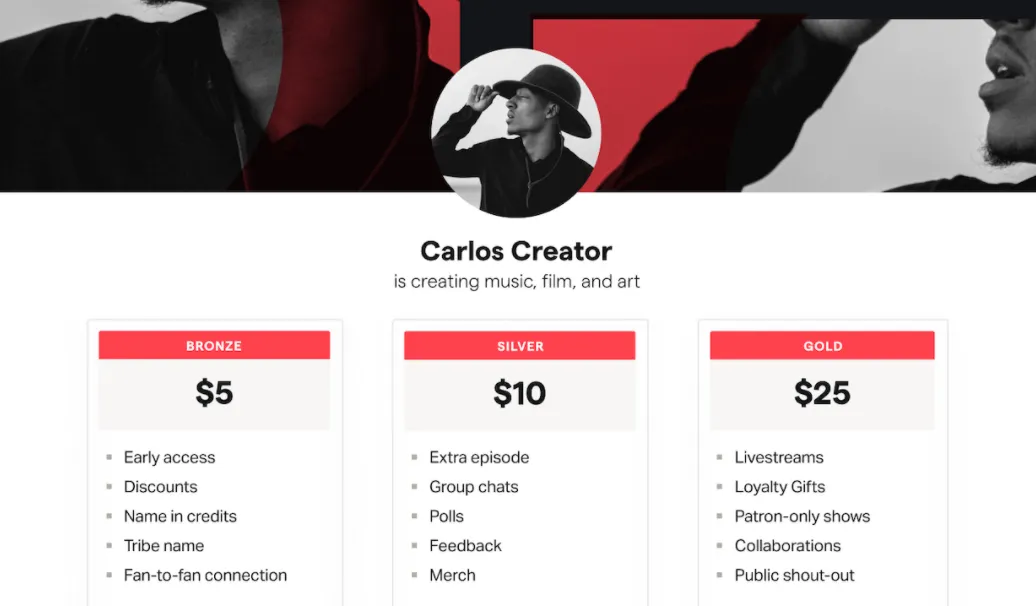Table of Contents Show
Jack Conte was simply another YouTube Creator in a sea of them in 2013. Currently, he is CEO of Patreon, which ranks among the world’s largest crowdsourcing platforms, with creators earning more than $1 billion through the platform as of December 2019.
What led him from being a YouTube Creative with limited technical expertise to become the CEO of the largest creator network in the world?
Conte’s tale, on the other hand, is as much his as it is Patreon’s. Let us examine Patreon’s origins.
We will discuss how Patreon Works, the Patreon business model, and its competition in the future.
Patreon is a membership platform that enables creators to make money from their fans and supporters by offering membership options.
Patreon earns money by charging creators when making money on three different levels (Lite – 5% cost, Pro – 8% fee, and Premium – 12% fee).
What is Patreon?
Patreon is a subscription platform that compensates authors based on a subscription model. Supporters are called patrons.
Patreon offers a crowdfunding service for members. In addition, there is a space for creative small business owners to provide access to material that is exclusive to paid patrons.
Patreon earns money from a combination of variable and transaction fees. Creators pay these fees, and they vary depending on the plan chosen.

Podcasters, musicians, video producers, and authors can take advantage of the services exclusively for creative professionals. However, several small businesses can utilize the site to advance their brand and create a strong community.
A second objective of the company is to establish a direct relationship and to generate recurring revenue.
Patreon was founded in 2013 and is based in San Francisco, California. It has grown to be one of the most popular crowdfunding sites. The company has raised more than $413 million in venture capital and is now valued at $4 billion.
How Does Patreon Work?
Patreon is a membership-based crowdfunding platform where creators can be compensated by fans and others who support them. Patrons are the supporters that make up these groups.
Business owners who are interested in participating begin as creators. The first step is to obtain information on your followers’ interests in membership benefits through your social media channels.
Content providers such as podcasters, YouTubers, charitable organizations, musicians, and small companies participate in Patreon.
Patrons will enjoy a range of benefits, including the following:
- Access to exclusive events
- Direct engagement with creators
- Content that is available earlier or exclusively
- Thank you to our supporters
A business owner can then create a page with various membership levels. Patrons pay them on a monthly or per-piece basis through subscriptions. You will be charged a 5% fee to utilize the service.
You can also access Patreon educational resources (known as kits) to assist you in increasing fan engagement and popularity.
These are small businesses that rely on member support for sustainability. Unfortunately, this means that your website may need some additional work to get up and running.
It is good practice for any small business to set benchmarks and milestones.
Patreon may also be used in conjunction with different applications such as Discord, Mailchimp, or Wix. This allows authors to use Patreon with other applications they already use.
Patreon may be an extension of a small company’s marketing efforts for small business owners.
Some people (such as those who offer guitar lessons) may be testing the waters to see if they can sustain a full-time business.
You can access Patreon via the company’s website and app (available on Android and iOS).
How Does Patreon Make Money?
Patreon makes money by charging creators a variable fee. There are three plans offered by the firm: Lite, Pro, and Premium.
Creators pay a charge of 5%, 8%, or 12% of the monthly money they earn on Patreon, depending on the plan they choose. Patrons, in turn, support their favorite creators with a monthly subscription fee.
A unique collection of services is also included with these plans, such as analytics reports, workshops, priority support, dedicated account managers, and limitless third-party app integrations.

Creators have access to alternative revenue streams through the Premium tier, in particular. They can, for example, begin selling branded gear (as a result of Patreon’s June 2018 acquisition of Kit), with fulfillment handled by Patreon.
Patreon also charges a processing fee for each gift a patron makes. There is a 5% fee plus $0.10 for micropayments (under $3). All payments over $3 are charged 2.9 percent + $0.30.
You can use Visa, MasterCard, American Express, or PayPal as a payment processor. However, Patreon charges its fees at cost, which means it does not profit from them.
Patron Fees
Patreon has over 3 million patrons, which is an impressive number. In addition, users can subscribe to a support plan whose details are set by the creator.
Patreon donates 90% of the pledged money when fans support an artist’s work. The remainder of 10% is cut as platform fees and processing fees, with 5% each.
Payment Processing Fees
Patreon charges a fee in addition to the subscription fee to accept patron contributions from creators.
There is a fee of 5% + 10 cents added to payments under $3. Any payment over $3 is charged 2.9 percent plus 30 cents.
What is the Funding and Valuation of Patreon?
Crunchbase reports Patreon has secured venture capital funding worth $413.3 million from over seven rounds.
Some notable investors include New Enterprise Associates, Index Ventures, Wellington Management, and Thrive Capital.
Patreon’s valuation increased to $4 billion following its April 2021 Series F fundraising. So there’s a new unicorn in town – Patreon.
How Do I Make Money with Patreon?
Make certain you first take care of the practical aspects of earning money with Patreon: set up to be paid! As a Patreon creator in the United States, you have two payment options: Stripe direct deposit or PayPal.
Patreon will retain 5% of your earnings (this is how they generate money). Then there may be additional costs depending on your payout method: Stripe charges $0.25 per deposit, whereas PayPal charges $0.25 or 1% of the amount transferred. (PayPal limits this charge to at least $20 per deposit.)
Additionally, you’ll need to complete a tax form if you earn more than $600 in a calendar year. Then you’re ready to go.
Now that you’ve learned how to earn money, it’s time to learn how to spend it. First, however, how do you do it using Patreon?
There are two possible responses to this: one is to leverage your audience, and the other offers something of value to a broad audience.
To harness your audience, you must first establish one. The people who read your website or listen to your music, who subscribe to your newsletter, who follow you on Twitter, Facebook, and Pinterest… these are the individuals who have the power to make you.
Therefore, ensure that they are aware of your Patreon! Then, share it widely on social media during your fans’ most active hours.
Do not be afraid to share it several times — social media moves so quickly these days that this is often the only way to ensure your postings are seen.

Make an announcement about it in your newsletter, and then include the information in your signature. Display the Patreon logo prominently on your website (and with a link to your page!)
You don’t yet have an audience? That’s another story, but you can construct one. It will take time, trial and error, and careful nurturing, but you can do it — begin by conducting a Google search for “how to grow an audience” and proceeding accordingly.
To attract subscribers to your Patreon page and build an audience, you need that wonderful product of value that only you can create.
Unfortunately, no one Patreon type guarantees rapid success. All I can say is that many of the top-performing Patreon pages feature videos — whether instructional, nerdy, or technology-related.
Therefore, if there is any way you can add videos to your Patreon page – whether you set up a webcam to show you drawing or painting or go full out and produce a music video to accompany a song you created – it won’t hurt your chances and may boost them significantly!
What are your thoughts? Are you prepared to take on the world of Patreon?
Get inspired and leverage this one-of-a-kind method to convert your audience into subscribers and cultivate a cash stream for your creative endeavors!
However, keep in mind that success is about nurturing your audience, making them feel connected, and succeeding together in the patronage of your art.
What is the Revenue of Patreon?
Patreon received $550 million in payments for the fiscal year 2019. As a result, Patreon’s annual revenue would be in the range of $25 million to $60 million, with fees ranging from 5 to 12 percent.
Success Story of Patreon
Patreon was started in 2013 by Jack Conte (CEO) and Sam Yam in San Francisco, California (CTO).
The two founders attended Stanford together (they eventually became friends), but their paths to founding Patreon could not have been more different.
Yam continued to study at Stanford, earning a Master’s degree in Computer Science (Marc Andreessen wrote his recommendation letter).
Finally, he took a leave of absence and became one of Loopt’s first developers. Yam had already left Loopt when Green Dot bought it for $43 million in 2012.
He cofounded AdWhirl three years before, in 2009, a platform for mobile developers that enabled them to deliver adverts and distribute their apps across many media.
AdWhirl processed approximately 3 billion advertisements each month at its peak. AdWhirl was acquired by AdMob (for an unknown sum) less than a year after its launch in 2010 and was then acquired by Google a few months later.
The exit provided Yam with a comfortable financial cushion, which he utilized to experiment with other ideas. For several months, he worked out of the Dogpatch Labs incubator alongside Kevin Systrom and Mike Krieger, who were developing the earliest version of Instagram at the time.
Yam ultimately agreed on an exciting concept: OurSpot, an online marketplace for freelance photographers. However, as fate would have it, that startup was never made public.
Yam instead chose to collaborate with Conte on a proposal he had presented to him a few weeks earlier. Let’s rewind the tape a bit first.
Yam took the typical engineer and entrepreneur paths, but Conte’s claim to fame is something special.
He graduated from Stanford with a degree in music and pursued a career as a full-time musician. In 2008, he formed Pomplamoose with his then-girlfriend (and now wife) Nataly Dawn.
The pair immediately established a fanbase, accumulating a significant six-digit following on platforms such as Spotify. They were even approached by several large labels but chose to remain independent.
Regrettably, living as an independent artist is not always as spectacular as it appears. After a few years in the music industry, the couple became increasingly disgruntled with the meager ad money generated by their music videos.
This aggravation reached an all-time high when Conte debuted a music video titled ‘Pedals,’ which he spent $10,000 on (while simultaneously maxing out his credit cards), only to receive a few hundred dollars in return.
The lack of earnings ultimately led him to develop the Patreon concept.
He contacted his former roommate Yam, aware that he would require technical expertise to build his idea.
Patreon became publicly available in June 2013. That same month, largely due to Yam’s Valley connections, the team raised a $700,000 seed round (valuing Patreon at $5.5 million).
Patreon’s team increased the startup’s value by another $2.1 million and $15 million by 2014.
The funding was generated by the over 100,000 users that signed up for Patreon’s service in the first year.
What fueled Patreon’s growth was (and continues to be) its obsessive emphasis on helping its creators.
Patreon developed a CRM-like tool for creators in 2017, enabling them to track their performance (and improve it).
Furthermore, it integrates with software such as Zendesk and Slack so its creators can continue to work with their existing tools.
The company’s continued expansion established it as a startup — and made it vulnerable to copycats. Notably, Facebook launched its fan support service in 2019.
The new offering was integrated directly into the material, allowing page owners to solicit support from their followers.
Regrettably, Patreon encountered several significant roadblocks on its path to success. First, its website was hacked in 2015.
A group of hackers known as #SuperExtremeShitpostingTeam obtained their users’ personal information, including registered names and email addresses. Their justification? None else than “doing things for larks’ sake.”
A blog post from Patreon CEO Conte in 2017 outlined a new pricing structure that angered many of its creators.
Smaller payments, ranging between $1 and $2, would have been disproportionally more expensive under the new charge structure.
As a result, patrons’ contributions would have undoubtedly ceased, having a significant negative impact on many creators.
Patreon, as a creator-led platform, quickly retracted its plan and committed to working more closely with its creators when launching new products.
Additionally, Patreon began to engage in politics due to the company’s growing impact on the creator community.
Its content moderation team has previously banned many accounts associated with hate speech propaganda and other conspiracy theories.
The company suspended several accounts associated with the right-wing group QAnon in 2020.
Despite some of these impediments, Patreon’s star will almost certainly continue to rise. Since its inception, Patreon has distributed nearly $2 billion to its creators. Today, the site is home to over 200,000 creators backed by over 6 million monthly active patrons.
Additionally, the company now employs over 300 employees and operates out of four locations worldwide.